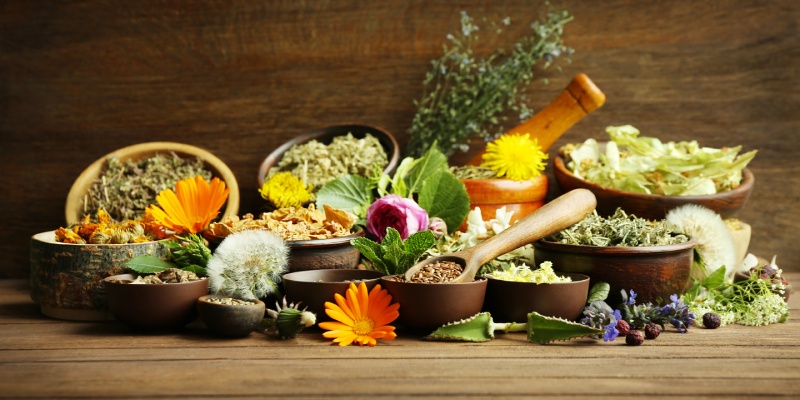
Chronic back pain is a persistent challenge that affects millions worldwide, impacting daily life and overall well-being. In this article, we’ll explore holistic healing approaches that go beyond conventional treatments. Let’s explore the 10 Natural Remedies for Chronic Back Pain that offer relief and promote holistic well-being.
Brief Overview of Chronic Back Pain
Chronic back pain is more than just a physical ailment; it significantly influences mental and emotional health. Understanding its complexities is crucial for effective management.
Holistic healing addresses the root causes of chronic back pain, considering the interconnectedness of mind and body. By adopting a comprehensive approach, individuals can achieve long-lasting relief.
10 Natural Remedies for Chronic Back Pain

Let’s delve into 10 Natural Remedies for Chronic Back Pain:
Marma Therapy
Marma therapy involves the stimulation of vital energy points in the body. Targeting these points restores the flow of prana (life force energy), releasing blockages and facilitating healing for chronic back pain. Each point corresponds to specific areas, aiding in pain relief and promoting harmony in the body.
Yoga Asanas
Yoga, tailored to individual dosha constitutions, offers a range of postures that enhance alignment, strengthen core muscles, and improve flexibility. Through Ayurvedic dosha-specific practices, yoga asanas alleviate pain by addressing imbalances and promoting overall well-being.
Vata Dosha:
- Prioritize stability with Mountain Pose and Warrior II.
- Alleviate lower back tension with gentle forward bends like Child’s Pose.
- Build strength gradually with slow, controlled movements.
Pitta Dosha:
- Cool the body with poses like Cooling Breath and Moon Salutations.
- Relieve discomfort with twists like Half Lord of the Fishes Pose.
- Practice in a serene environment to minimize stress impact.
Kapha Dosha:
- Stimulate energy flow with invigorating poses like Sun Salutation.
- Counteract stagnation and enhance flexibility with backbends like Cobra Pose.
- Maintain a dynamic practice to prevent sluggishness.
Pranayama
Pranayama, the Ayurvedic practice of breath control, regulates the dynamics of Vata, Pitta, and Kapha doshas. Specific breathing techniques bring balance to these energies, calming the mind and reducing the perception of chronic back pain.
Vata Dosha:
- Balance energy with Alternate Nostril Breathing.
- Cultivate warmth and focus with Victorious Breath.
- Ground and reduce mental stress with deep breathing.
Pitta Dosha:
- Release excess heat with a Cooling Breath.
- Cool the body and ease inflammation with Cooling Breath.
- Achieve a cooling effect with Hissing Breath, especially in warmer climates.
Kapha Dosha:
- Invigorate with Skull-Shining Breath to dispel sluggishness.
- Stimulate the body and uplift energy with Bee Breath.
- Promote lightness and energize Kapha with vigorous breathing.
Herbal Formulations
- Custom Formulations: Ayurvedic practitioners create personalized herbal blends based on an individual’s dosha imbalance linked to pain.
- Vata Reduction: Inclusion of Ashwagandha, Guggulu, and Shatavari to alleviate nerve-related stiffness and discomfort caused by Vata imbalance.
- Pitta Soothing: Integration of Brahmi, Neem, and Turmeric to calm inflammation and ease heat-related pain associated with Pitta aggravation.
- Kapha Alleviation: Use of Trikatu (Ginger, Long Pepper, Black Pepper) to break down stagnation and enhance circulation, reducing Kapha-related stiffness.
- Anti-Inflammatory Combinations: Boswellia, Ginger, and Turmeric are combined to address inflammation at its source, providing relief from pain.
- Adaptogenic Support: Incorporation of adaptogenic herbs like Tulsi and Licorice to reduce stress-related tension, fostering overall resilience and well-being.
Aromatherapy with Ayurvedic Oils

- Dosha-Specific Oils: Utilization of dosha-tailored oils such as Ginger for Vata, Sandalwood for Pitta, and Eucalyptus for Kapha to directly balance individual energies.
- Massage Blends: Blending oils in carrier oils like Sesame or Coconut enhances absorption during massages, optimizing dosha-balancing effects.
- Nervine Calming Scents: Aromas like Lavender, Chamomile, and Ylang Ylang directly calm the nervous system, reducing stress-related tension associated with the problem.
- Inhalation Techniques: The use of essential oils like Peppermint or Eucalyptus in inhalation techniques clears respiratory passages and eases muscle tension discomfort.
- Customized Diffusion: Diffusing dosha-specific oils in living or workspaces directly creates an environment conducive to dosha balance, promoting a sense of calmness and relaxation.
- Daily Dosha Balancing Rituals: Encouragement for direct incorporation of dosha-specific oils in daily rituals, such as oil-pulling or bathwater addition, for continuous dosha harmonization and sustained relief from pain.
Panchakarma
Panchakarma, an intensive Ayurvedic detoxification process, eliminates toxins accumulated in the body. Clearing these toxins reduces inflammation, enhances circulation, and supports the body’s natural ability to heal chronic back pain.
Abhyanga
Abhyanga, the Ayurvedic practice of self-massage with oils, nourishes and strengthens the spine. It improves flexibility, reduces stiffness, and enhances circulation, offering relief from chronic back pain.
Dietary Changes for Back Pain
Foods to Eat:
- Fatty Fish: Include salmon, mackerel, and sardines for omega-3 fatty acids, known for their anti-inflammatory properties that alleviate the problem.
- Leafy Greens: Consume spinach, kale, and broccoli, rich in antioxidants and vitamins, reducing inflammation and promoting spine health.
- Berries: Blueberries, strawberries, and raspberries contain antioxidants combating oxidative stress, benefiting back health.
- Turmeric: Known for curcumin, turmeric is anti-inflammatory, aiding in relieving pain.
- Nuts and Seeds: Walnuts, almonds, flaxseeds, and chia seeds provide omega-3s and essential nutrients for back health.
- Ginger: Add fresh or powdered ginger to meals for its anti-inflammatory properties, aiding in pain relief.
- Green Tea: Loaded with antioxidants, green tea reduces inflammation and may assist in managing the problem.
- Pineapple: Contains bromelain, an enzyme with anti-inflammatory properties, easing pain.
Foods to Avoid:
- Processed Foods: Reduce intake of trans fats and refined sugars in processed foods, as they contribute to inflammation and worsen pain.
- Sugary Beverages: Limit sodas and energy drinks, as excessive sugar can trigger inflammation.
- High-Sodium Foods: Minimize fast food, canned soups, and processed snacks, as they lead to water retention and discomfort.
- Excessive Red Meat: Moderation is key; excessive red meat consumption may promote inflammation due to its high saturated fat content.
- Artificial Additives: Avoid foods with artificial additives, preservatives, and colouring agents, as they may contribute to inflammation.
- Refined Grains: Limit white bread and pasta, as they can spike blood sugar levels and potentially worsen inflammation.
- Alcohol: Moderation is advisable as excessive alcohol consumption can dehydrate the body and increase inflammation.
- Fried Foods: Cut down on fried foods as they often contain unhealthy fats that contribute to inflammation and discomfort.
Snehana and Swedana therapies
Snehana (oleation) and Swedana (sweating) therapies involve the systematic application of oils and heat. This combination lubricates the joints, improves flexibility, and alleviates chronic back pain by reducing stiffness.
Lifestyle Adjustments
Ergonomics and Posture:
- Maintain good posture while sitting, standing, and lifting objects.
- Choose ergonomic chairs and equipment for optimal spine support.
- Take breaks, stretch, and move to avoid prolonged sitting for better well-being.
Importance of Regular Exercise:
- Engage in low-impact exercises like swimming, walking, or cycling to strengthen back muscles.
- Incorporate exercises that focus on core strength to support the spine.
- Consult a fitness professional or physiotherapist for personalized exercise routines.
Quality Sleep for Back Pain Management:
- Consider investing in a mattress and pillows designed to support your spine effectively.
- Develop a bedtime routine that includes relaxation techniques like meditation or gentle stretching.
- Create a sleep-friendly environment, ensuring the room is dark, quiet, and at a comfortable temperature.
Implementing these lifestyle adjustments can significantly contribute to managing and alleviating the problem.
Conclusion
Holistic healing offers a comprehensive solution to chronic back pain by addressing its root causes. The integration of natural remedies, lifestyle adjustments, and a focus on the mind-body connection contributes to a more sustainable approach.
Embracing natural remedies for chronic back pain requires commitment and an open mind. Encourage readers to explore the diverse range of holistic options available and find what works best for them.
FAQs
How long does it take to see results with holistic healing for back pain?
Holistic healing is a gradual process, and individual experiences vary. Some may experience relief within weeks, while others may take longer.
Can I solely rely on natural remedies for Chronic Back Pain without medical intervention?
It’s advisable to consult with a healthcare professional before making any significant changes to your treatment plan. Holistic healing can complement medical care but should not replace it entirely.
Are there specific yoga poses suitable for chronic back pain?
Yes, certain yoga poses, like cat-cow and child’s pose, are beneficial for easing the issue. It is imperative to engage in these practices under the supervision of a qualified instructor.
Are essential oils safe for everyone, including those with sensitive skin?
While essential oils have numerous benefits, individuals with sensitive skin should perform a patch test before regular use. It’s also essential to dilute oils properly.
Can dietary changes alone help in managing chronic back pain?
Dietary changes play a significant role, but a holistic approach involves a combination of lifestyle adjustments, stress management, and natural remedies for optimal results in chronic back pain.




